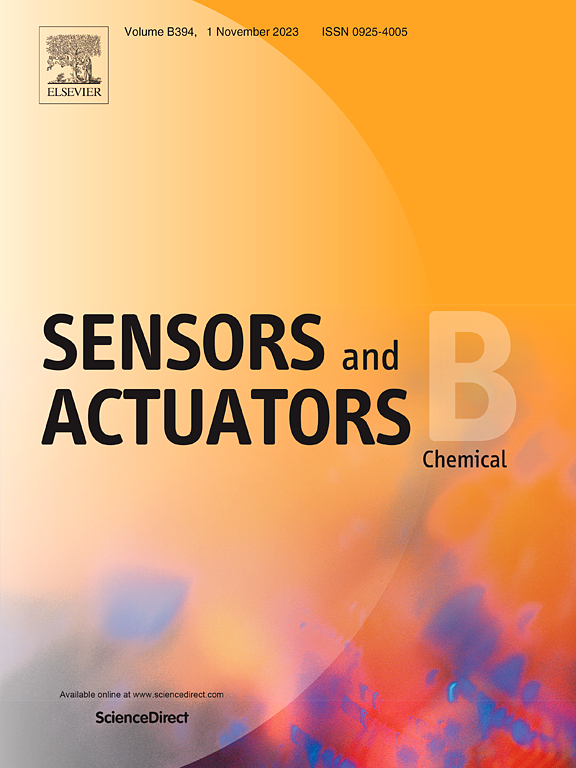Extreme sensitivity biosensing platform based on Fano resonance and graphene oxide
IF 8
1区 化学
Q1 CHEMISTRY, ANALYTICAL
引用次数: 0
Abstract
Improving the sensitivity of surface plasmon resonance (SPR) sensors is a crucial field of research, as it enables the detection of lower concentrations of analytes and smaller biomolecular interactions. This study developed a novel Fano resonance (FR) sensor with exceptional sensitivity and figure of merit (FOM) by combining graphene oxide (GO) with a plasmonic silver film-polydimethylsiloxane (PDMS) hybrid nanostructure. The results demonstrated that the FR-GO sensor achieved an average refractive index (RI) sensitivity of 33.6 μm/RIU, representing a 20.53 % improvement over the FR sensor (27.9 μm/RIU). Additionally, the FOM increased by 36.25 %, reaching a maximum of 2383.82 RUI−1, which was two orders of magnitude higher than traditional SPR sensors. To evaluate its practical application, the sensor was used to detect carcinoembryonic antigen (CEA), a tumor biomarker. The proposed sensor exhibited a measurement sensitivity of 5.2 nm/(ng/ml) and a limit of detection (LOD) of 63.5 pg/ml. Furthermore, the method demonstrated good selectivity, reproducibility, and stability. The enhanced sensitivity and FOM of this sensor design have the potential to advance early disease detection and biomolecular interaction studies.
基于Fano共振和氧化石墨烯的高灵敏度生物传感平台
提高表面等离子体共振(SPR)传感器的灵敏度是一个至关重要的研究领域,因为它可以检测低浓度的分析物和较小的生物分子相互作用。本研究通过将氧化石墨烯(GO)与等离子体银膜-聚二甲基硅氧烷(PDMS)杂化纳米结构相结合,开发了一种具有优异灵敏度和优值图(FOM)的新型Fano共振(FR)传感器。结果表明,FR- go传感器的平均折射率(RI)灵敏度为33.6 μm/RIU,比FR传感器(27.9 μm/RIU)提高了20.53%。FOM增加了36.25%,最大可达2383.82 RUI-1,比传统SPR传感器提高了2个数量级。为了评估其实际应用价值,我们将该传感器用于检测肿瘤生物标志物癌胚抗原(CEA)。该传感器测量灵敏度为5.2 nm/(ng/ml),检出限(LOD)为63.5 pg/ml。该方法具有良好的选择性、重复性和稳定性。该传感器设计的灵敏度和FOM增强,有可能促进早期疾病检测和生物分子相互作用的研究。
本文章由计算机程序翻译,如有差异,请以英文原文为准。
求助全文
约1分钟内获得全文
求助全文
来源期刊

Sensors and Actuators B: Chemical
工程技术-电化学
CiteScore
14.60
自引率
11.90%
发文量
1776
审稿时长
3.2 months
期刊介绍:
Sensors & Actuators, B: Chemical is an international journal focused on the research and development of chemical transducers. It covers chemical sensors and biosensors, chemical actuators, and analytical microsystems. The journal is interdisciplinary, aiming to publish original works showcasing substantial advancements beyond the current state of the art in these fields, with practical applicability to solving meaningful analytical problems. Review articles are accepted by invitation from an Editor of the journal.
 求助内容:
求助内容: 应助结果提醒方式:
应助结果提醒方式:


